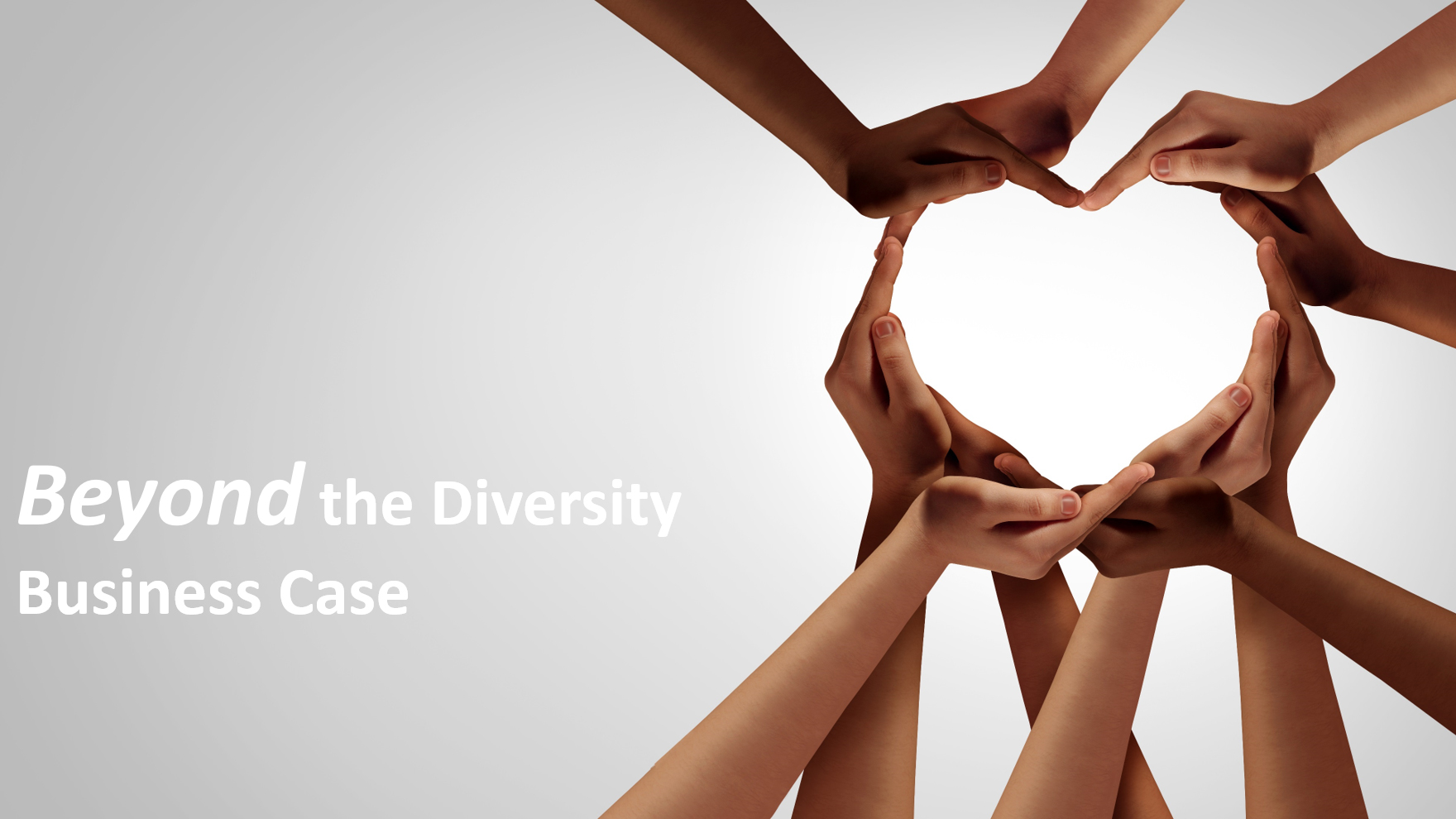I was not surprised when a conversation I was engaged in recently on the limitations of diversity and inclusion interventions at organisations quickly shifted from the reconfiguration of power relations to the “sound” evidence of the business case. Diversity drives business results! Having more women on the team brings innovation and creativity! These rallying cries for more diversity in companies is often accompanied by some form of articulation of the empirical evidence for hiring underrepresented groups, good intentions and a glossed over nod to the wider social and historic conditions which remain and continue to inform systemic inequalities. Inclusion and equality work has always been about reorganizing and redistributing power and resources. While there a business case for increasing diversity representation, it is troubling to suggest that company profit is the primary driver for D&I efforts, instead a broader vision of equity, inclusion, learning, innovation, adaptability and basic human dignity and equality must be adopted.
“Diversity in itself does not automatically result in improved business performance. What matters is how a company harnesses diversity in all forms and whether it is willing to reshape its power and resource structures”
The diversity representation business case on its own does not stack up anyway
Harvard Business research suggests that while research from consulting firms and financial institutions are aplenty, it rarely stands up to academic scrutiny. Evidence typically points to correlation not causality. However organisations that recognize and implement the right organisational conditions like the ability to link diversity-performance, foster inquiry and learning, create psychological safety, remove barriers to participation and enable teams to effectively learn from their differences tends to provide more substantiated evidence for improved business performance.
Placing more emphasis on the business case can have the opposite effect. If financial gains are not immediately seen, companies may withdraw wider support for such initiatives, leaning instead to the easier alternative of only solving for diversity representation. Research has also shown that underrepresented groups are typically not attracted to companies who punt the business case. Research shows that underrepresented groups are generally evaluated more harshly than dominant groups and the added pressure of linking their presence to business growth is often viewed as an unfair burden which is not expected of those who don’t experience inequities.
“Inclusion is insufficient if does not fundamentally reconfigure power relations”
Inclusion can become another buzzword
While many progressive companies have recognized the need to move beyond the diversity business case, inclusion is often misconstrued as meaning the same as being valued and respected. The very definition of to include means to “make someone or something part of a group” and a common synonym is “fit”. The words on its own suggest an assimilation into the status quo and a power imbalance of dominant groups attempting to include non-dominant groups into what is still regarded as the dominant groups space. Being respected valued and trusted involves having the power to set the agenda, influence what and how outcomes are achieved, having ones interest taken into account, having the same authority and trust which is automatically afforded to dominant groups, and having contributions equally rewarded with further opportunities to advance. This the crux of the learning-effectiveness formula for success which Harvard put forward as a model for diversity-performance in the late nineties, and which has, over the years, been misguided in favor of limited and easier approaches which do not fundamentally alter the status quo.
Diversity is a fact, but inclusion is a choice we make everyday. As leaders, we have to put out the message that we embrace, and not just tolerate, diversity. ~ Nellie Borrero
Conditions for success
Moving beyond the business case requires the real work to be done. It is not easy. It requires commitment, courage and continuous effort from everyone.
Be curious about yourself
Change starts with you. Most people want to do better and be better but lack the insights into their developmental areas. Understanding your own biases and limiting beliefs, assessing your ability to work across differences, understanding your ability to be a non-performative ally and champion for inclusion and analyzing your ability to harness diversity to drive business success, are all necessary first steps in empowering yourself in the journey.
Be curious about others
Curiosity is a powerful tool to drive an inclusive culture. It requires you to respectfully understand ‘The Why behind the Behavior” and to not immediately counter or negate other perspectives or be quick to make judgments.
Being curious always requires us to avoid making assumptions. Ask yourself if your view is based on any real evidence or if you are making an assumption based on your beliefs or attributing traits of the wider group to an individual or of the individual to the wider group.
I recall starting at new company some years ago and within the first week I had a number of international commitments lined up requiring me to travel extensively. During the flights I noticed that I was being served special vegetarian meals. I am not a vegetarian and was perplexed when it kept happening. Upon making a call to my assistant, she proudly announced that she had in fact ordered it because she assumed that I was Hindu and all Hindus are vegetarians. I am in fact an Asian woman of Indian descent but had given her no indication of my religious affiliation. As benign as this example may seem, it can have wider implications if our unchecked assumptions lead to pervasive exclusions.
“Highlighting the gap between thoughts and actions holds people accountable”
Challenge mindsets and beliefs
People are at the core of an organizations culture. Their mindsets and behavior inform that culture and is built through the relationships that are created within a workplace. It is the daily interactions, languages and behaviors which give life to a company’s culture, to fundamentally dismantle systems of discrimination and inequality, people’s hearts, minds and behaviors need to shift. As a first step, people need to understand how systems of oppression and privilege play out in an wider setting and how long held stereotypes and prejudices inform everyday subtle acts of exclusion.
During a diversity workshop I attended, a young Black woman shared that she was often “complimented” by her White colleagues that she was very eloquent and articulate. While she acknowledged that it was in all probability genuinely intended as a compliment, the impact it had on her was the very opposite. She explained the context behind the long-held stereotype that Black people do not speak well, and that accent, and in fact, English, was historically misused as an indicator of intelligence. It is a stereotype that is so deeply ingrained in implicit bias that when confronted by an “eloquent” and “articulate” Black person these inherent stereotypes are unconsciously challenged to the point where one feels compelled to point it out. Her sharing was difficult for White attendees to hear, it required uncomfortable reflection, but the result was a heightened awareness once the prevailing context of the underlying stereotype was better understood.
“Change happens at the intersection of Awareness and Action”
Practice Inclusion Everyday
A heightened sense of awareness is meaningless unless it can be translated into everyday micro actions. Look for opportunities to practice inclusion in everyday contexts and turn these into habits through continuous practice. Learn how to hold inclusive meetings, avoiding creating “go to” groups at the exclusion of others, learn how to broaden your networks and how to flip harmful languages into daily micro affirmations.
While chairing a Diversity and Inclusion committee at a company some years ago, a senior female executive had shared that the use of the word “aggressive” in hiring discussions, particularly with regards to female talent, was a problematic practice which potentially introduced bias into the process. On reflection, the work “aggressive” was banned from hiring and performance management discussions, forcing people to lean towards focusing on candidate’s expertise and skills. Eventually a complete re engineering of the recruitment process was conducted, including the introduction of blind resume screenings, data driven decisions, the removal of gender biased adjectives in advertisements and standardized interview processes, but the trigger was a seemingly benign example of how bias can creep into everyday life through unchecked micro actions and words.
“No one wants to feel like a box of crayons”
Bring in diverse styles and give them the authority and latitude to make decisions
Being the token appointment without creating an environment which enables people to succeed is a problematic, harmful practice, the unintended consequences of which sets up marginalized groups to fail. When conducting academic research on the topic, I heard story after story from marginalized groups expressing their experiences in being the “token” appointment. In many cases, people were explicitly told that they are the diversity hire or promotion. I heard stories of people of color being asked to attend a meeting to be the representative diverse face in the room. No one wants to feel like their existence is to fulfill someone else’s objectives. It is dis-empowering and humiliating. Not only are the impacts on business detrimental but on the longer-term psychological effects on talent are severe, resulting in lower morale, battered confidence and self-doubt.
Build a culture of Trust and Psychological Safety
People should trust that they have the safety to confidently speak up and ask for what they need. Inequities thrive in a climate of silence. People should feel they have the latitude to hold differing views and make mistakes without being penalized. They should feel secure enough to address tough issues and take risks. These are the ideal conditions for an organisation to innovate and create.
We all want to have something to offer. This is how we belong. It’s how we feel included. So if we want to include everyone, then we have to help everyone develop their talents and use their gifts for the good of the community. That’s what inclusion means-everyone is a contributor. And if they need help to become a contributor, then we should help them, because they are full members in a community that supports everyone.” ― Melinda Gates
There are certainly many ways to build an environment in which everyone can feel belonging, valued, respected and trusted for their unique perspective and contributions. The work takes Courage, Humility and PRACTICE. For us to thrive in these times, we urgently need seismic shifts in hearts and minds and not another business case.


